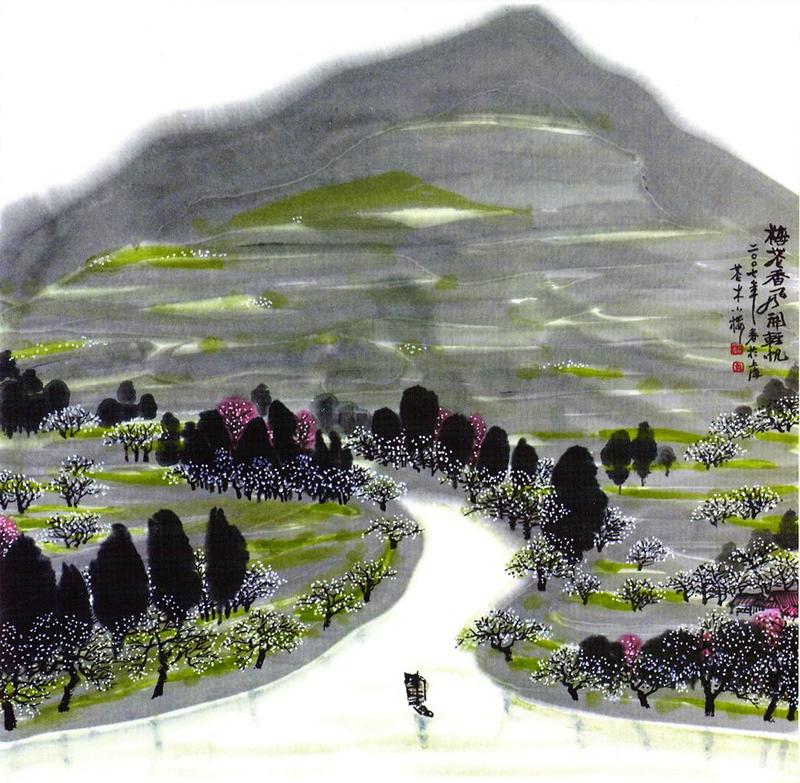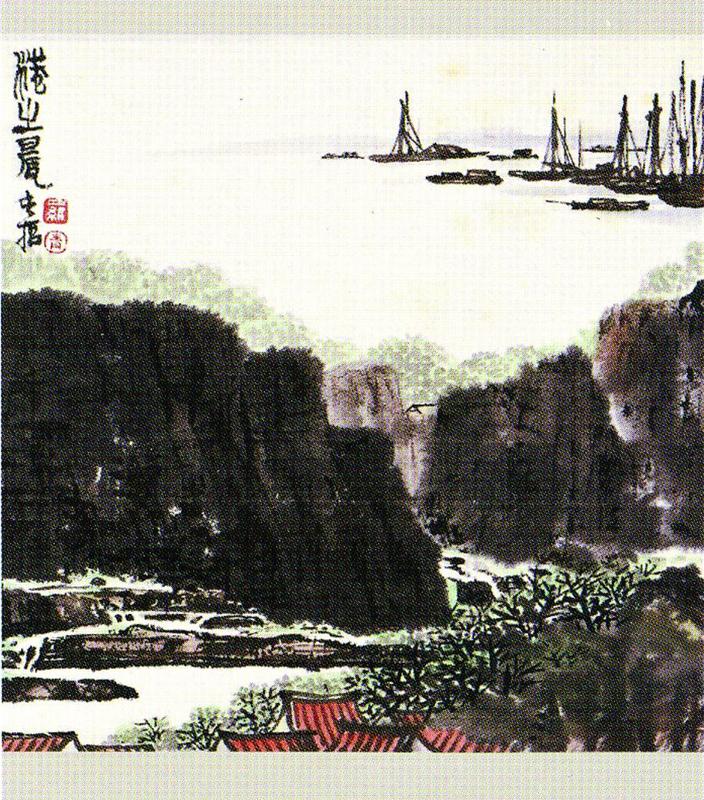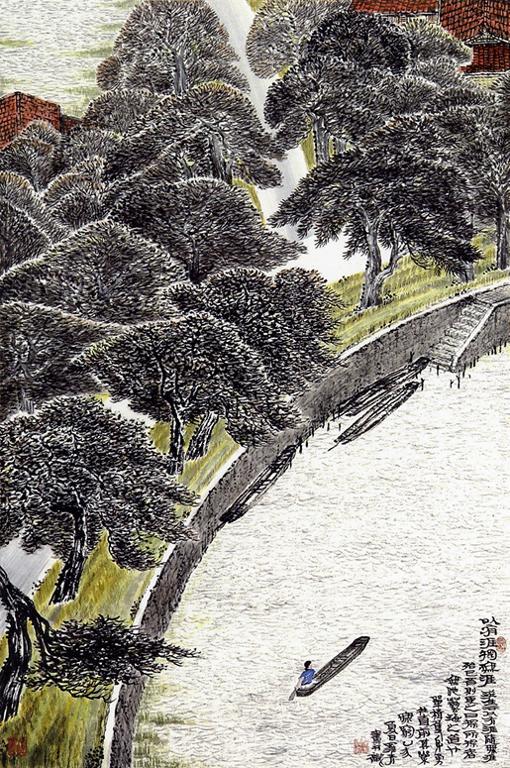Sailing and searching
"But there are still moments when I walk into a vallery or a quiet place... then, for me, it's not a problem to experience it the way painters or the travelers experienced it 1,000 years ago or 800 years ago..."
-Lo Ch'ing, 2015
Although Lo experiments with a range of painting techniques and styles, not all of his works include overt signs of contemporary life. In these three paintings, travel is expressed through boats and water ways, leading the viewer deeper into the landscape. Lo reminds us that humans have always used technology to navigate the natural world, harnessing the power of wind and water currents.
The painter evokes early spring with quick brushstrokes of bright green and pink against soft gray. He articulates individual plum blossoms with tiny dots of white along black tree branches. The delicate sailboat in the foreground is small next to the flowering trees, and it is dwarfed by the mountain in the distance. The curve of the river suggests that the boat may never reach the mountain that dominates the landscape—the travelers' ultimate destination is obscured and uncertain. They are as transient and ephemeral as the spring flowers.
Lo demonstrates the narrative potential of landscape painting by placing a line of rocky cliffs between the moored boats and the red, gabled roofs of a fishing village. This separation of human elements implies the passage of time as well as physical space. We see both the beginning and the end of a journey in single panel. The central landscape can be read literally and metaphorically. Unlike the distant mountain ranges of other paintings, these cliffs seem traversable—a river flows between them and pale green foliage rises behind them. Reading the painting from top to bottom, we imagine an arduous day's work that begins in the harbor and ends in a comfortable home.
By contrast, the beginning and the end of the journey are purposefully obscured in this painting. Lo Ch'ing presents us with an aerial view of a lone human figure in a narrow canoe, paddling alongside a curving stone wall. The wall is steep and the landscape is hidden behind a dense cluster of trees, articulated with miniscule, meticulous lines. But there is a path open to this traveler: a staircase leads from the water to the shore and a pale gray road stretches outward, beyond the edge of the painting. Three empty boats crowded around the staircase suggest that other travelers have passed this way before, and perhaps more will follow.
The aerial view denies us the easy progression of foreground to middleground to background. Instead, we see a single moment in a longer, implied narrative.


